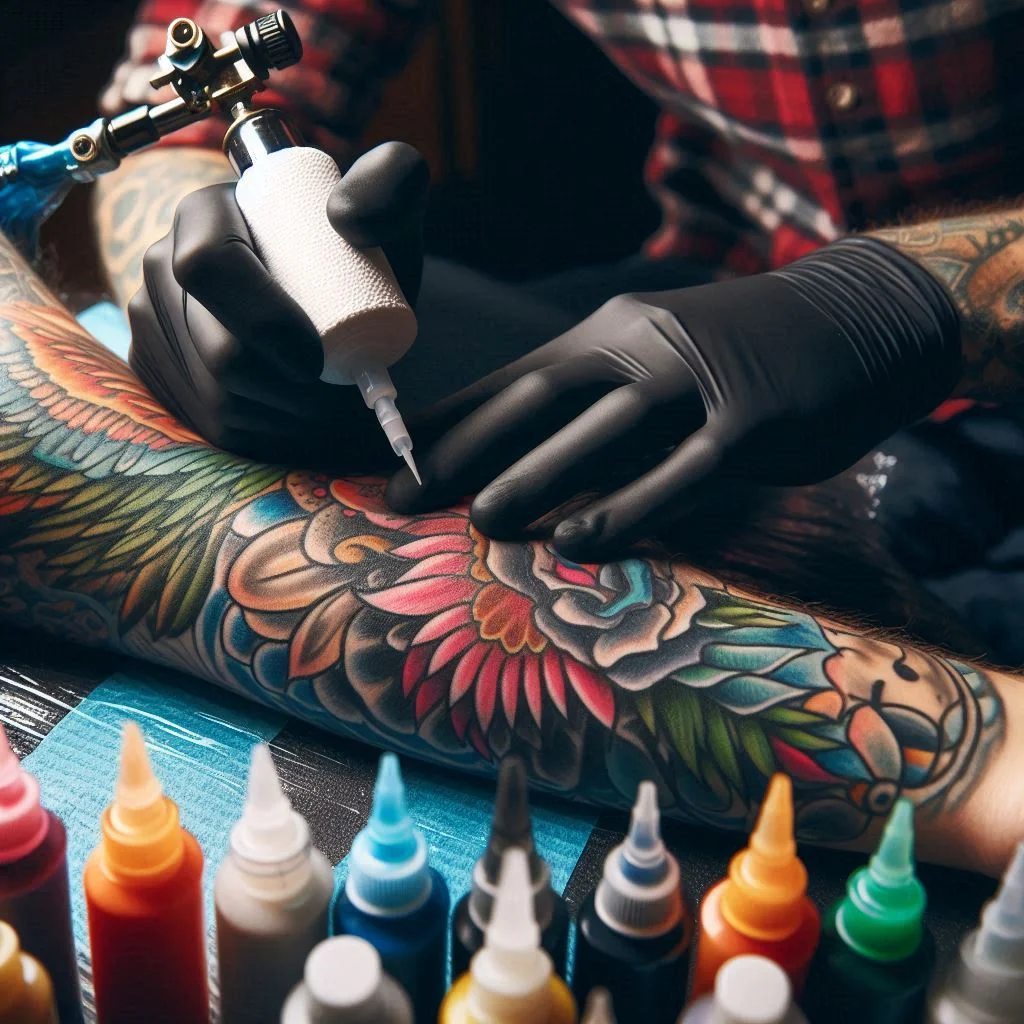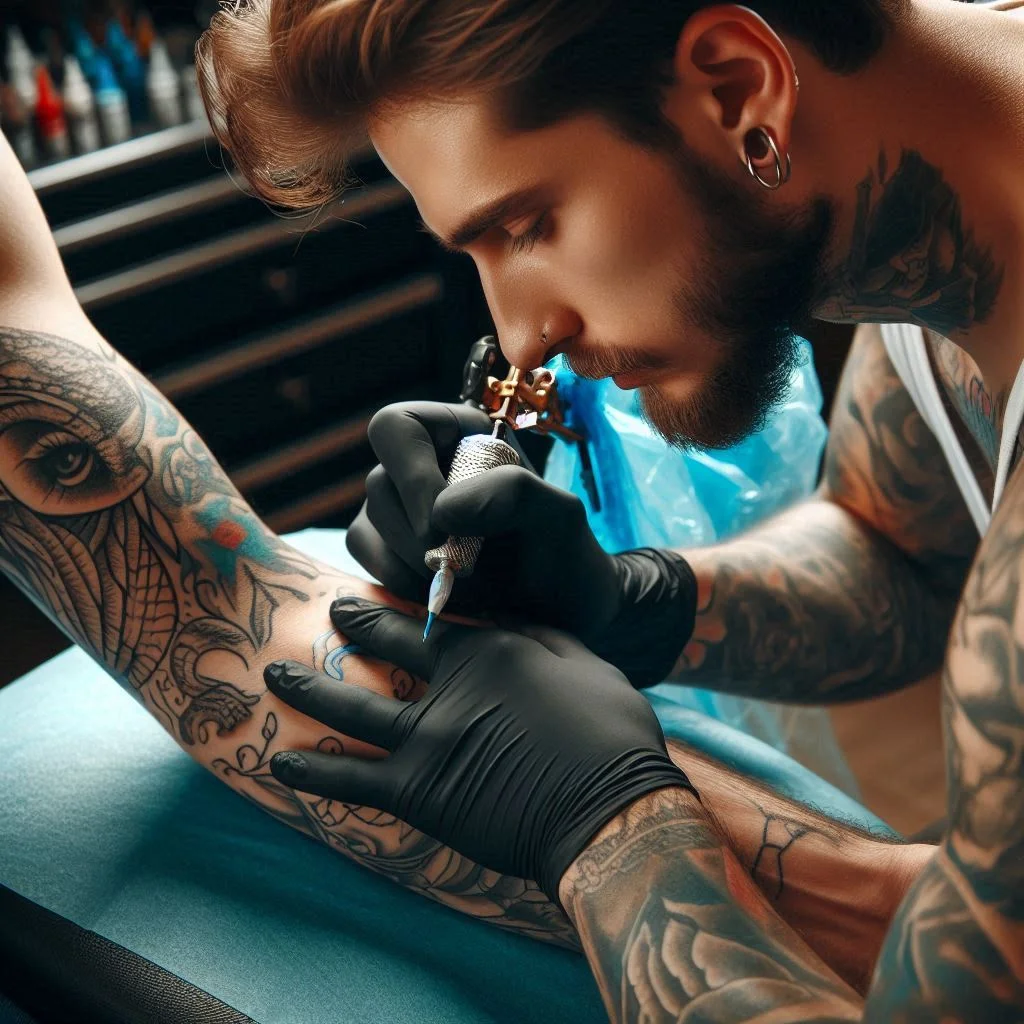Can Numbing Cream Interfere with the Tattooing Process?
Getting a tattoo is an exciting experience, but the pain involved can make some people hesitant. To ease discomfort, many turn to numbing creams before their session. But does using numbing cream impact the tattooing process? The short answer is yes—and not always in a good way.
Numbing creams work by desensitizing nerve endings in the skin, which makes the tattooing process less painful. However, this lack of sensation can be problematic for tattoo artists. Since they rely on the client’s reactions to gauge depth and pressure, the absence of natural pain feedback can lead to excessive force being applied.
- Overworked skin, which can take longer to heal
- Inconsistent ink saturation, leading to patchy tattoos
- Excessive swelling, which can distort the design while being inked

Additionally, some numbing creams contain ingredients that make the skin more difficult to work with. The altered texture and firmness may prevent the ink from settling properly, ultimately affecting the tattoo’s clarity and longevity.
Does Numbing Cream Impact the Tattoo Healing Process?
The tattoo healing process is a crucial phase in getting a tattoo. Once the ink is embedded in the skin, your body works to repair the area, forming a protective layer that eventually flakes away to reveal the final design. However, certain numbing creams can disrupt this healing process in several ways:
Reduced Blood Flow and Delayed Healing
Some numbing creams contain epinephrine, a vasoconstrictor that narrows blood vessels to reduce bleeding. While this might sound beneficial, it can actually slow down the body’s natural healing process by limiting the flow of oxygen and nutrients to the tattooed area. This can result in:
- Prolonged scabbing, which may lead to uneven healing
- Increased risk of infection, as wounds take longer to close
- A faded tattoo, since healing plays a crucial role in color retention
Skin Irritation and Allergic Reactions
Even if you don’t have sensitive skin, numbing cream for tattoos can sometimes cause unexpected irritation. Ingredients such as lidocaine and benzocaine can lead to redness, itching, or swelling, which may interfere with healing. If an allergic reaction occurs, it could cause:
- Blistering, which can distort the tattoo design
- Scarring, leading to permanent texture changes in the skin
- Peeling and patchiness, which can result in an uneven final result
Are There Risks of Using Numbing Cream Before a Tattoo?
While numbing creams can provide temporary pain relief, they also come with potential side effects that could negatively impact your tattoo experience. Some of the most common risks include:
1. Temporary Skin Changes
Numbing creams often make the skin firmer or puffier. This can alter how the ink absorbs into the skin, leading to inconsistent results. Some artists find that working on numbed skin feels different, making it harder to achieve clean, crisp lines.
2. Uneven Pain Tolerance
Numbing cream typically lasts one to two hours. If you’re getting a large tattoo, the effect may wear off mid-session, causing a sudden return of pain. This can be more uncomfortable than a gradual pain experience since your body hasn’t had time to adjust naturally.
3. Studio Policies on Numbing Cream
Some tattoo studios discourage or even refuse to work on clients who have used numbing creams. Many professional artists believe that pain is an essential part of the process, ensuring that clients can tolerate the full tattoo session. If you arrive at a studio with irritated or swollen skin from numbing cream, you may be asked to reschedule, potentially losing your deposit.

Does Numbing Cream Provide Complete Pain Relief?
While numbing creams help reduce pain, they don’t eliminate it completely. Tattooing involves more than just sharp pain—it also includes:
- A vibrating sensation, especially over bones
- A burning feeling, particularly during shading
- Pressure from the tattoo machine, which can cause discomfort
Additionally, the effectiveness of numbing cream varies from person to person. Some people may experience significant relief, while others might still feel moderate pain, especially in sensitive areas like the ribs, hands, or feet.
Should You Trust Your Tattoo Artist Instead?
Professional tattoo artists have years of experience in managing pain during a session. Instead of numbing creams, many artists use natural pain relief techniques, such as:
- Taking breaks during long sessions
- Adjusting their tattooing technique to reduce discomfort
- Using Bactine or lidocaine sprays, which are applied once the skin is open and more effective than pre-applied creams
If you’re concerned about pain, communicate with your tattoo artist before your session. They can help you prepare and may suggest alternative ways to make the experience more comfortable.
What Are the Alternatives to Numbing Cream?
If you prefer to avoid numbing cream but still want to manage pain, consider these safer alternatives:
1. Choose a Less Painful Tattoo Placement
Some areas of the body are more pain-sensitive than others. If you have a low pain tolerance, opt for a location with more fat and muscle, such as:
- Upper arms
- Thighs
- Forearms
Avoid areas with thin skin and bony structures, like the ribs, hands, or collarbone, as these tend to be more painful.
2. Stay Hydrated and Rested
Your body’s ability to handle pain improves when you’re:
- Well-rested
- Properly hydrated
- Eating a balanced meal before your session
Avoid alcohol and caffeine, as they can thin the blood and make the experience more uncomfortable.
3. Use Lidocaine-Based Aftercare Products
Instead of using numbing creams before your session, ask your tattoo artist if they offer Bactine or similar lidocaine-based sprays. These can be applied once the tattoo is in progress, helping reduce pain without affecting the tattoo process.
4. Practice Deep Breathing and Relaxation Techniques
Controlled breathing techniques can help manage pain naturally. Try inhaling deeply through your nose, holding for a few seconds, and exhaling slowly through your mouth.
Final Verdict: Is Numbing Cream Worth It for Tattoos?
While numbing cream for tattoos can provide temporary pain relief, it comes with several risks that may impact the final result. From interfering with the tattooing process to delaying healing and increasing the risk of allergic reactions, numbing creams are not always the best choice.
Instead, consider alternative pain management methods and trust your tattoo artist’s expertise. If you do decide to use numbing cream, make sure to:
- Patch test beforehand to avoid allergic reactions
- Consult your tattoo artist to ensure they’re comfortable working on numbed skin
- Use high-quality numbing creams to minimize risks
At the end of the day, tattoos are a form of self-expression, and the experience—including some discomfort—is part of what makes them meaningful. If you’re well-prepared, hydrated, and working with a skilled artist, you’ll have the best chance of getting a tattoo you love and healing properly.
For more insights on tattoo care and skincare, visit Beauty Face UK.